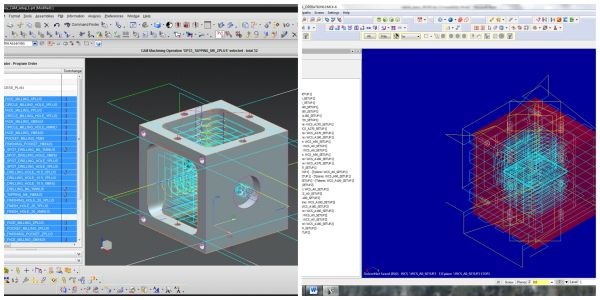CAM to CAM Data Exchange With STEP-NC
CAD to CAD data exchange has been possible for decades, but CAM to CAM data exchange is just now emerging. An open meeting sponsored by OMAC on June 24-25, 2013 will test and demonstrate prototype translators to facilitate data exchange using the STEP-NC standard.
Share







Hwacheon Machinery America, Inc.
Featured Content
View More
ECi Software Solutions, Inc.
Featured Content
View More

Takumi USA
Featured Content
View More

CAD systems have long been able to exchange part geometry files by translating the data into a vendor-neutral format. Translators using the STEP-NC standard are now enabling CAM systems to exchange manufacturing data such as CNC machining programs. These translators are expected to result in new levels of machine tool interoperability.
An open meeting supported by OMAC on June 24-25, 2013 will test and demonstrate prototype translators to facilitate data exchange using the STEP-NC standard. The meeting will be held at the Commonwealth Center for Advanced Manufacturing in the Richmond, Virginia, area. OMAC (Organization for Machine Automation and Control) is an industry consortium created to help end users, technology providers, government institutions, academia and original equipment manufacturers (OEMs) work together to find innovative ways to improve production operations.
The meeting will review tests and demonstrations of CAM to CAM data exchanges for Mastercam, Siemens NX and CATIA V5. Pilot projects to develop the business advantages of these translators to facilitate a more accurate and timely job quoting process, on-machine part inspection and acceptance, improved cutting tool selection and earlier simulation/verification of manufacturing processes will also be announced. The cutting tool pilot is likely to be the first to be deployed. In it, users will send operation descriptions to tooling bendors and receive back tool recommendations with process descriptions that minimize the total cost of tooling.
The concept behind STandard for Exchange of Product model data –Numerical Control (STEP-NC) is to use geometric constructs representing part features and their associated characteristics such as dimensional tolerances to define device-independent tool paths. STEP-NC is intended to enable manufacturing organizations to seamlessly share machining and measurement information between machines and over the Internet. STEP-NC replaces machine input based on M and G codes with an associative language that connects the CAD data used to determine the machining requirements for an operation with the CAM process data that solves those requirements.
Related Content
-
5 Tips for Running a Profitable Aerospace Shop
Aerospace machining is a demanding and competitive sector of manufacturing, but this shop demonstrates five ways to find aerospace success.
-
Continuous Improvement and New Functionality Are the Name of the Game
Mastercam 2025 incorporates big advancements and small — all based on customer feedback and the company’s commitment to keeping its signature product best in class.
-
4 Commonly Misapplied CNC Features
Misapplication of these important CNC features will result in wasted time, wasted or duplicated effort and/or wasted material.











.png;maxWidth=150)



















.jpg;maxWidth=300;quality=90)




